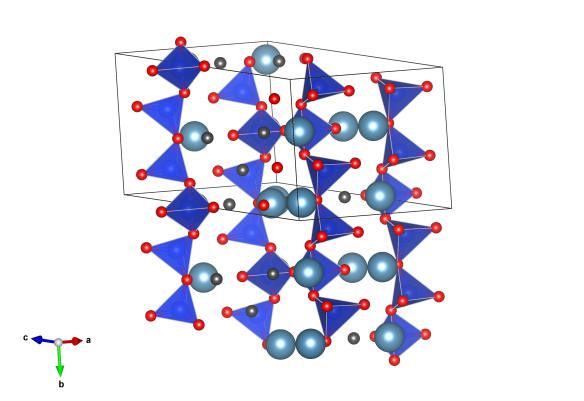Sounds edible, but isn't - Tobermorite
We're starting to draw to a close on the 'crystal structures inspired by food' theme on the blog, but room for just a couple more? Tomorrow's last one is a cracker, but today's is a little more tenuous – a mineral that sounds like it should be a chocolate bar.
What does it look like?

Image generated by the VESTA (Visualisation for Electronic and STructural analysis) software http://jp-minerals.org/vesta/en/
The blue polyhedra are silica units (silicon atoms in the middle with red oxygen atoms in the corners) which make a double chain through the structure. The large light blue atoms are calcium which sit in-between and are calcium atoms with the small grey atoms marking the positions of water molecules.
What is it?
Tobermorite is a mineral named after the Scottish village Tobermory found on the Island of Mull (as well as having a mineral named for it, the village was inspiration for a popular children's program in the UK). It is a calcium silicate hydrate, and is the natural mineral of this very important ingredient of Portland cement. The hydration and crystallisation of this mineral product is what give the cement its strength.
Where did the structure come from?
There are a couple of variations of Tobermorite, one with four water molecules and the other with five. The one we've drawn has five and is #902244 in the Crystallography Open Database.






